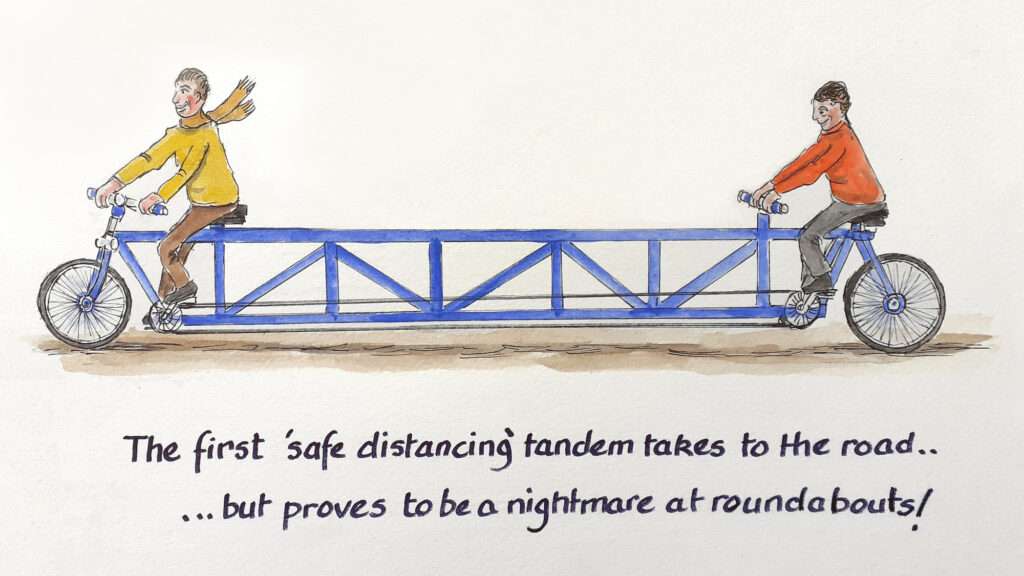What is the non-verbal gap?
Imagine you want to ride a tandem bike with a partner. In the beginning, you are totally uncoordinated and you can barely ride in a straight line. After some practice, you are able to synchronize your pedaling and balance. It takes some learning and trust to reach a comfortable level where you understand each other’s non-verbal cues.

You may have guessed where I am going with this. That is exactly like pair programming. You’re working on a problem and you just sort of “get” each other’s groove.
But, with remote pairing, reading non-verbal cues can be a bit of a challenge. Screen-sharing apps like Zoom, Tuple, Screenhero, and Slack Huddle have been game-changers in fostering collaboration.
Even with these apps, it is not easy to pick up on your partner’s facial expressions, body language, or those quick, unspoken signals that happen naturally in person. So, it takes some extra effort to keep the communication flowing smoothly when you can’t rely on those non-verbal hints. These tools heavily rely on a stable internet connection and any latency issues lead to delays in real-time collaboration. This could throw off the groove and slow down the flow of pair programming.
So, should we pair only in-person? Call me crazy, but after experiencing working from home, I’d rather not return to the in-person version. I really enjoy pairing but from the comfort of my home and PJs.
How do I improve my remote pairing experience?
- Switching roles frequently. While remote, it is easy to get stuck in our pairing roles for long durations. One effective practice is to frequently switch roles between the driver and navigator. This ensures that both team members are actively engaged in problem-solving and code review. The more you switch roles, the more comfortable and adaptable you become. It’s like leveling up in a video game; you gain new skills and strategies with each switch, making you a more versatile and confident coder. Additionally, frequent role switching ensures that each team member gains a comprehensive understanding of both the codebase and the problem at hand. This shared knowledge enhances collaboration and reduces dependencies on individual expertise.
- Making smaller commits. Encourage making smaller commits rather than large, monolithic ones. This approach not only facilitates smoother collaboration but also eases the process of identifying and rectifying issues, fostering a more iterative and agile development workflow. You’re not building Rome in a day; you’re laying bricks every hour. Each driver’s turn results in a manageable chunk of code, making it easier to review, test, and collaborate. Small commits align well with the frequent switching point mentioned above.
- Taking regular breaks. When you are deeply invested in solving a problem, nobody wants to break the flow and step away from the desk. However, it is proven that taking breaks improves team collaboration and contributes to effective problem-solving by providing a mental distance from complex issues. It refreshes your mind and prevents burnout. So, don’t hesitate to take a moment to recharge, refuel, and return to your code with renewed vigor. After all, even superheroes need a breather between saving the world.
- Shake things up when stuck. It’s natural to hit roadblocks when solving a problem. Instead of dwelling on the issue forever, why not mix things up a bit? Switch roles, grab a short breather, or just shoot the breeze for a moment. It’s like giving your brain a little refresh button, bringing in new vibes and outlooks. It may be a very simple but often forgotten technique to have a productive pairing session.
These changes have helped make my remote pair programming experience feel like an epic coding party, even if we’re all wearing PJs on our respective ends. If you have more ideas to share on optimizing remote collaboration, I’d love to hear them! Connect with me and let’s keep the coding party going strong.
Looking for more? This article is a great resource on pair programming.

